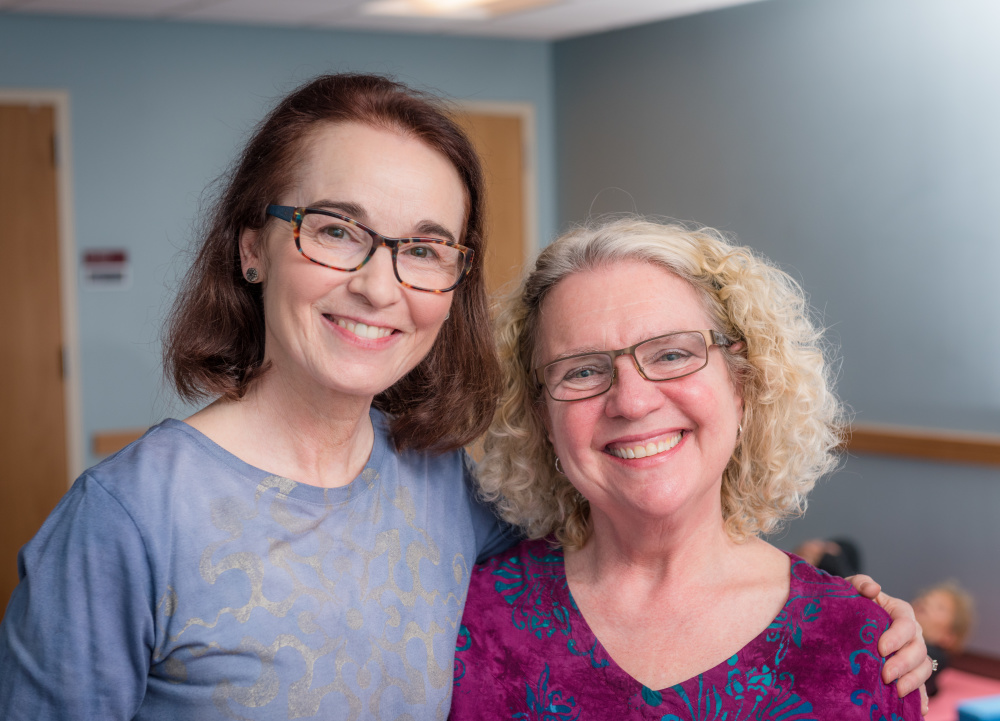
By Diana Stork, PhD
Diana Stork, PhD, has spent much of her career observing, teaching, and writing about interpersonal behavior and organizational culture. After the college-professor-turned-consultant was diagnosed with breast cancer in July 2016, she was introduced to a new culture of caring as a patient at Dana-Farber Cancer Institute and Brigham and Women’s Hospital. She was fascinated by what she found.
They say that once you are trained as a social scientist, you become a constant observer of life. During the period that I received daily radiation oncology treatment at Dana-Farber, this was true for me; I watched what people did, listened to what they said, and took lots of notes. What I experienced surprised me. I expected that my oncologist, radiation therapist, nurse, and social worker would care for me, but everybody else that I encountered seemed to genuinely care, as well.
I have come to characterize this as a caring culture, one filled with many “small cs” that helped me fight the “big c”: cancer.
Read More:
One morning, two nurses were talking outside the Radiation Oncology waiting room about a great play one of them had seen in New York City. It was clear they weren’t trying to be private, and my curiosity was piqued, so I asked what play. I expected a quick answer, and perhaps a smile. Instead, both nurses turned around and included me fully in the conversation. They established a connection with me and made me a comfortable conversation partner.
The cashiers in the Lavine Family Dining Pavilion were always courteous and ended whatever brief conversation we had with “have a good day.” They meant it. On one occasion, when I asked one of them why there wasn’t a tip jar, she smiled and gestured to the Jimmy Fund donation canister beside her register. She seemed genuinely pleased to encourage my giving to Dana-Farber. In that moment, she showed me she cared.
On another occasion, I was in the radiation suite and heard a man coughing from inside a single-stall restroom. I went to the nurses’ station and let them know, and a nurse went back to the door and listened, waiting to make sure things didn’t get worse. When the man finally came out, she gently put a hand on his shoulder and asked, “You doing OK?” It was a simple gesture, but in that moment of physical contact the nurse comforted the man and showed compassion to someone who needed it.
Throughout Dana-Farber and Brigham and Women’s, I saw camaraderie and cheerful interactions among the staff, and that let me know I was in a place where people were happy to be. And if it’s in a place like this, that will translate into being courteous, careful, competent, and compassionate. It’s all part of the caring culture.

In the yoga, Pilates, exercise, and other kinds of movement classes I’ve enjoyed at the Zakim Center for Integrative Therapies, both during and after my radiation treatment, the instructors make the effort to connect with the students, not just teach their classes. They challenge the students and celebrate each person’s achievements and progress. Instructors check in with students, asking how they are. When I mentioned to my qi gong instructor that I had not been sleeping well, he paused to ask if I had checked with my oncologist about possible side effects from my medications. He and other instructors show concern for their students’ well-being and compassion for those who could use a little extra care.
I feel such a sense of connection and comfort at Dana-Farber that even though I now only need checkups every few months, I come in three or four days a week for different fitness classes. In each, I feel a sense of belonging to a community of fellow fighters. And when I leave the Yawkey Center garage, even there, that caring culture is apparent. I call one parking attendant “Smiling Girl” because she is always cheerful, and when I asked another parking person why she was always so friendly to everyone, she said, “Every morning I wake up and realize how lucky I am.” Apparently, she feels it’s her job is to share some of that great spirit with others.
“Caring” is an action word. Care is a static noun. You can care for someone, but not really show it. But if you are caring, it shows. At Dana-Farber and Brigham and Women’s, the caring culture shows.
